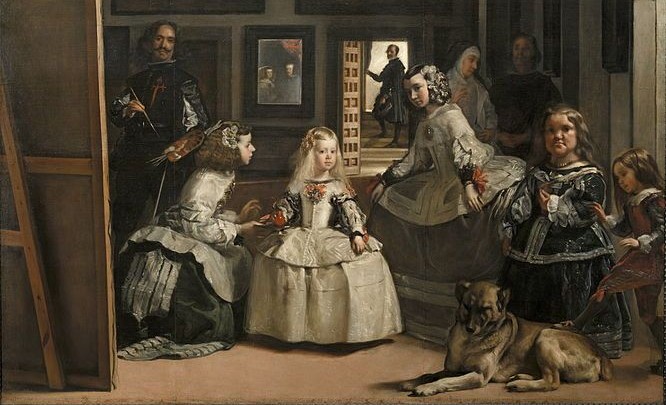“Broader cultural exploration”: discovering art on Erasmus
Diego Velázquez’s painting, Las Meninas, is perhaps the most famous painting to be found in the prestigious Prado gallery, in Madrid. It redefined the Renaissance understanding of artistic perspective, and its use of a multiplicity of vanishing points gives it an almost modern edge. It engages the audience, placing them in a scene to which they must respond. You feel like you’ve just entered a private space; a forbidden room which you weren’t meant to see. Many heads rise at your arrival into this intimate tableau of Spanish court life. Even the painter turns to gaze at you.
The painting transcends the mere aesthetic however; it almost teases viewers to unravel its secrets. Is Velázquez using this gaze to transcend time and reach out to us? Why is the royal couple depicted in an almost moribund fashion, in the mirror at the back of the room? Is the man emerging from the light in the hallway entering or just leaving? What could Velázquez be painting? Could it be La Infanta? Or is she here simply to entertain us?
Before I came to Madrid on Erasmus, I knew nothing of art history, or of art more generally
Before I came to Madrid on Erasmus, I knew nothing of art history, or of art more generally. I only had a vague idea of the various periods and ‘isms’. I was familiar with a few contemporary names, such as Picasso and Warhol, but if you tested me by winding back the centuries, then I simply wouldn’t have known where to start. Therefore, now living in such close proximity to internationally recognised art centres, such as the Prado gallery, the Reina Sofia and the Thyssen-Bornemisza, it seemed like a reasonable idea to explore and expand my understanding somewhat.
Moving to the present day, I now am able to spend a lot of my time on the Paseo del Arte, the promenade that connects all three of the galleries, soaking up Madrid’s surprisingly chilly winter air. Despite time spent as such, the knowledge I have gained is still largely restricted to that of the great Spanish maestros, such as Velázquez, Picasso and El Greco; but it is nevertheless a clear leap from my previous levels of engagement.
The Erasmus experience can be about embarking on some broader cultural exploration
My commitment to these works of art has moved beyond a simple appreciation for their aesthetic value, and towards an ability to recognise these paintings as smaller parts, subsumed within a larger contextual whole.Being so close to the physical manifestation of these paintings has given me an incentive to learn more, and whilst being on Erasmus is certainly a challenging experience, I have a lot for which I can be thankful.
This leads me to a broader point: the Erasmus experience will prove testing to even the most seasoned of travellers and the most adaptable of people. Not only linguistically (in my case), but also academically, bureaucratically and even culturally, will people face challenges. However, whilst this may be the case, I often like to reflect on what I’ve gained. Primarily, a higher level of Spanish, but I’ve also gained an increased tolerance for different administrative and cultural systems. Above all, and undoubtedly the most pertinent to this article, I’ve broadened my horizons.
Whilst this is a rather cliché way to conclude an article, it is important to stress that the Erasmus experience is not all about linguistics or academia. Often, it can be about embarking on some broader cultural exploration. In my case, and I’m sure there are many others that are similar, my Erasmus year sparked within me an interest for art that I never knew I possessed.

Comments